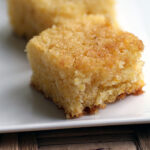Learn How to Make Franklin Barbecue’s Smoked Chicken
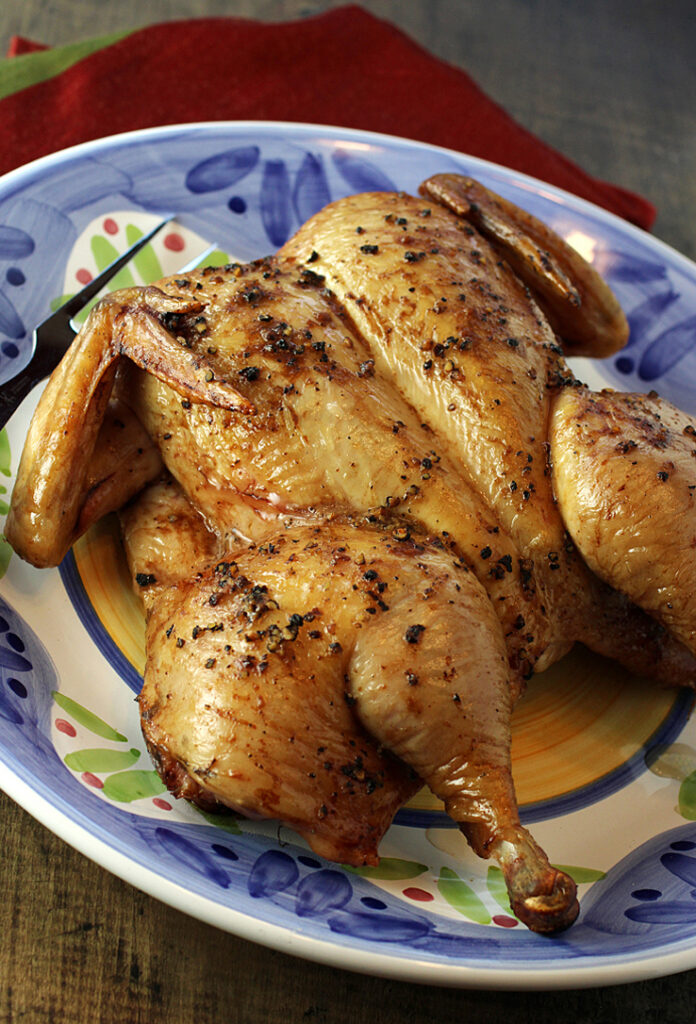
I’ve yet to make the life-changing pilgrimage to Austin to endure the hours-long line for the much-lauded fare at Franklin Barbecue.
But at least now, I can say that I’ve made owner Aaron Franklin’s “Smoked Chicken” at home — and swooned over the results.
It’s actually an easy recipe that results in some of the juiciest chicken around, kissed by smoke and infused subtly with tangy, sweet, peppery, and piquant notes. In short, it’s outstanding.
It’s from his book, “Franklin Smoke” (Ten Speed Press, 2023), of which I received a review copy.
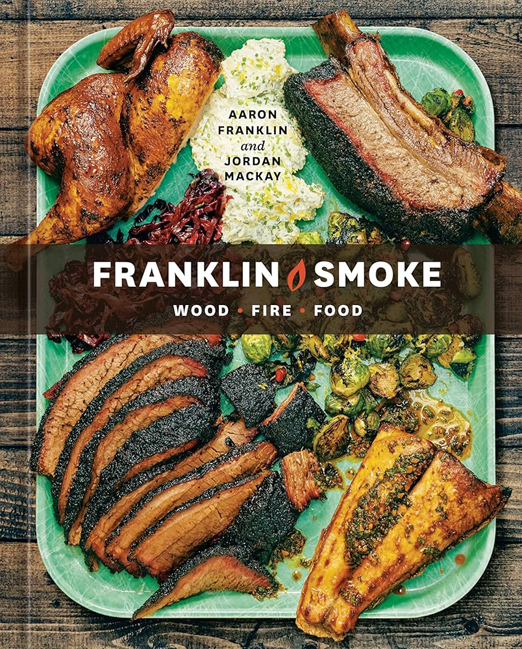
A James Beard Foundation “Best Chef” Award winner who has garnered every major barbecue honor around, Franklin wrote the book with New York-based James Beard Award-winning writer Jordan MacKay.
The pandemic first sparked the idea for this book, when Franklin found himself cooking more at home for his family. As such, the recipes for the most part are ones that both he and MacKay turn to for everyday meals. That includes, “Grilled, Smoked Whole Branzino,” “Oysters with Shallot-Chive Butter,” “Firepit Pork Shoulder ‘Steaks,’ ” and “Fire-Kissed Brussels Sprouts.”
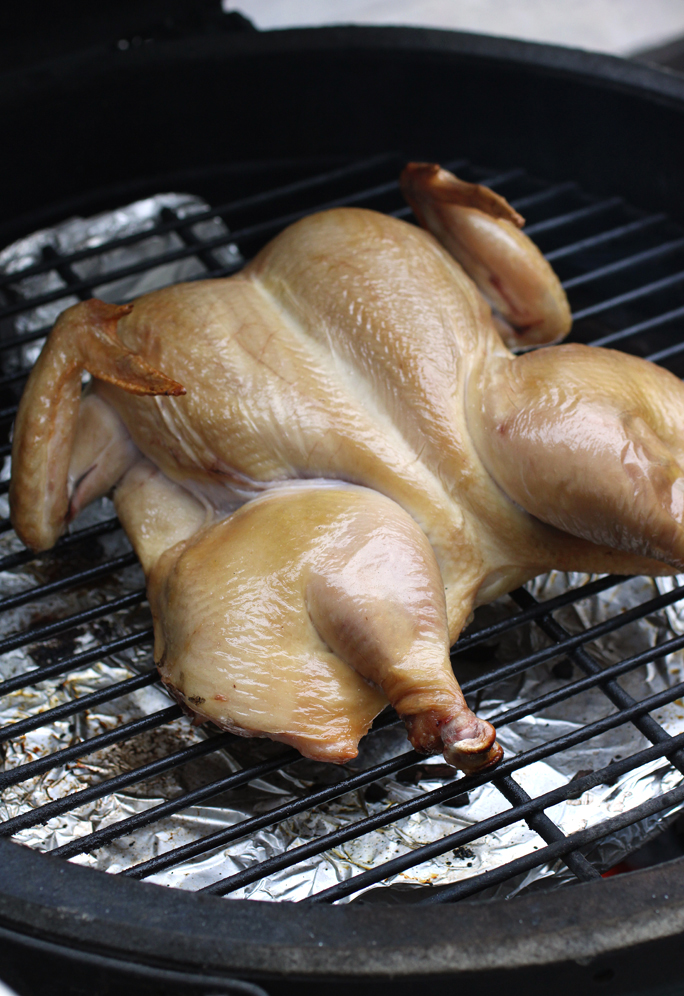
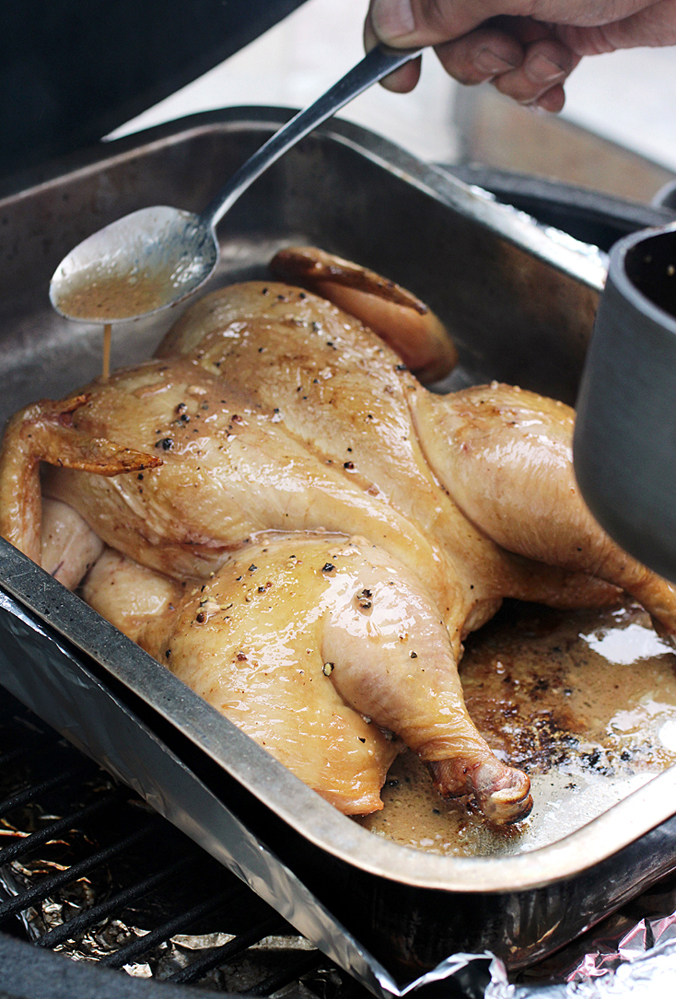
A good chunk of the front of the book is devoted to types of smokers, grills, and firepits; types of fuel; and instructions how to build and control your fire.
This smoked chicken is cooked on a heavy-weight Portable Kitchen Grill or PK grill that has an oblong shape (like a bathtub) that allows for true two-zone cooking.
Of course, my husband and I do not own one of those, and I’m guessing that most people don’t. So, my husband adapted a few of the directions so that the chicken could be cooked inside our Big Green Egg. I’ve amended the recipe to include that, along with our use of soaked wood chips rather than one big wood chunk that Franklin prefers.
For best results, spatchcock the chicken, rub it all over with salt, and place it on a baking sheet uncovered in the fridge for 24 to 72 hours. This allows the salt to penetrate more, flavoring the meat more deeply. It also air-dries the skin, turning it crispier when cooked.
When ready to cook, be sure to take the chicken out of the fridge to allow it to come to room temperature first.
The chicken first cooks directly on the grates for 25 minutes before being transferred onto a sheet pan or baking sheet that goes back onto the grates.
As the chicken cooks over the coals, it gets brushed a couple times with a simmered mixture of sherry vinegar, butter, Dijon mustard, honey, black pepper, and salt. The pan will help cook the underside of the chicken, as well as catch the sauce and chicken drippings to flavor the chicken.
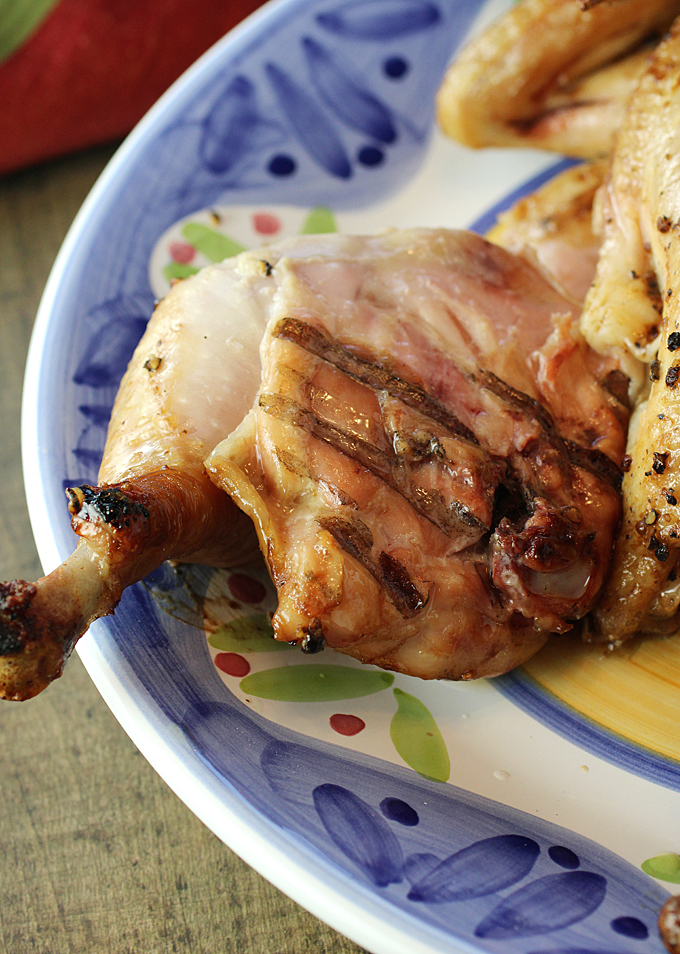
After the chicken is plated, you could even spoon the drippings into a small bowl to allow folks to drizzle a little on their individual portions. There’s quite a bit of oil in this, so you might want to skim some off before using. Just remember, a little of the drippings goes a long way, as it’s very concentrated, tasting salty and peppery, almost like barbecue sauce.
I can’t get over how moist and deeply flavorful this chicken is. The skin is crispy, though not crackling so, because it’s been basted as it cooks. The mop doesn’t overpower. In fact, it somehow makes the chicken taste more chicken-y.
Franklin says this method also would work well for quail, guinea fowl, or Cornish game hens. Or even for boneless leg of lamb, pork roasts or any other medium-size cut that will fit on the grill with the lid closed.
Austin can wait. At least for the time being. But this recipe begs to be made again and again as soon as possible.
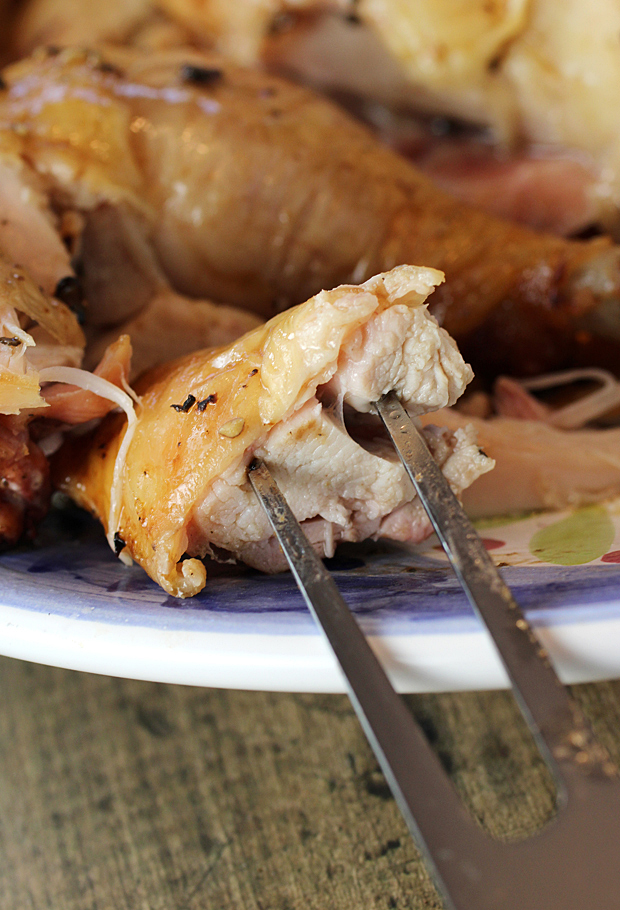
Smoked Chicken
(Serves 4 to 6)
Kosher salt
One whole chicken, 3 to 5 pounds, spatchcocked
For the mop:
1/2 cup sherry vinegar
1/4 cup unsalted butter
2 tablespoons Dijon mustard
1 tablespoon honey
1 tablespoon freshly ground pepper
1/2 teaspoon kosher salt
Liberally salt the chicken all over and set it on a baking sheet. Let the chicken air-dry, uncovered in the refrigerator for at least 24 hours or up to 72.
To make the mop: At some point before cooking the chicken (this can be done a day ahead of time, then refrigerated and reheated), in a small saucepan over low heat, combine the vinegar, butter, mustard, honey, pepper, and salt and warm through, stirring occasionally until the butter melts and the mixture has formed a sauce.
Remove the chicken from the fridge and allow it to temper on the counter.
Ready a chimney full of charcoal, then dump the chimney into one end of the grill bed. Using the Franklin Formation, lay a 10-inch log (Franklin uses post oak) next to the coals to form the boundary of a two-zone setup, in which the half of the grill with the wood is the cool zone and the half with the lit charcoal is the hot zone. The front edge of the log will catch fire, creating smoke and flames, and producing a hybrid grilling and smoking situation. Or alternatively, place a good-size wood chunk on the coals. Close the lid and allow the wood to start smoking. The temperature should be hot — somewhere between 400° and 450°F. (If using a Big Green Egg, soak about 1/2 cup of wood chips for at least 30 minutes, then pour over the hot coals.)
Lay the chicken, breast-side-up, on the grate as far as possible from the heat, with the legs nearest to the heat. Close the lid and cook for 25 minutes.
Open the lid, lift the chicken (using tongs or pick it up with a kitchen towel in your hands), and place a quarter sheet pan or baking pan (whatever can fit in your grill when the lid is closed) under the chicken. The pan will capture your mop and let it combine with the chicken juices, evaporating them and steaming the underside of the bird. This is a good time for the first drizzle with the mop. Drizzle with the mop again after 15 minutes and a third time after another 15 minutes.
Now’s a good time to gauge the temperature. Insert a digital thermometer into the center of the breast (you’re looking for about 150°F) and then in the thickest part of the thigh, but not touching the bone (you want 175° to 180°F). It will probably require more cooking, so continue to baste every 10 to 15 minutes until it’s done.
When the chicken is done, transfer it to a platter and let rest until cool enough to carve and serve.
Adapted from “Franklin Smoke” by Aaron Franklin and Jordan MacKay
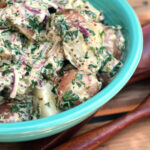
Enjoy With: Gordon’s Red Potato Salad with Whole-Grain Mustard Dressing
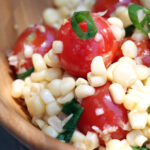
And: Corn, Tomato and Scallion Salad
